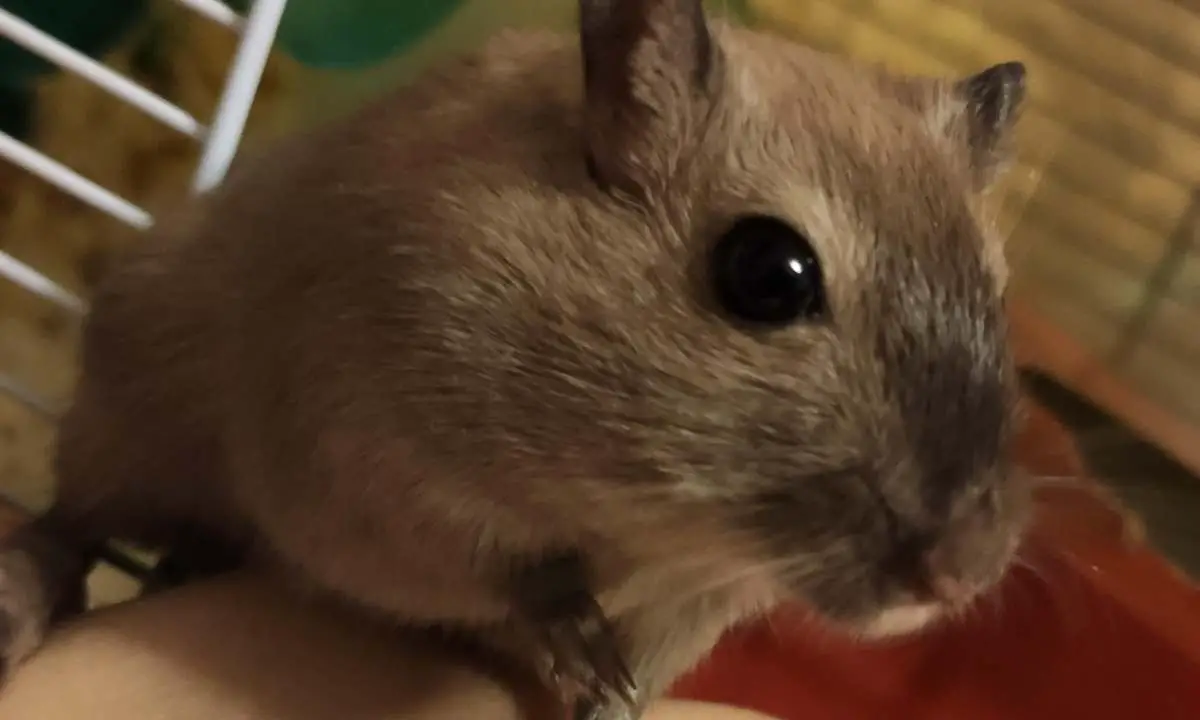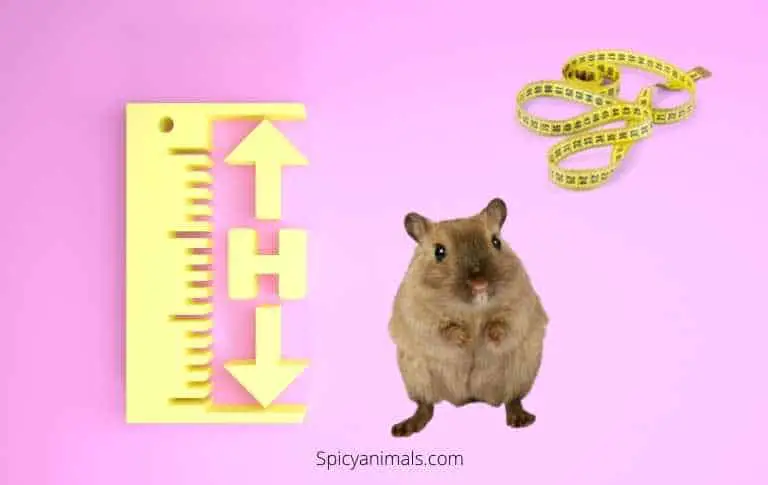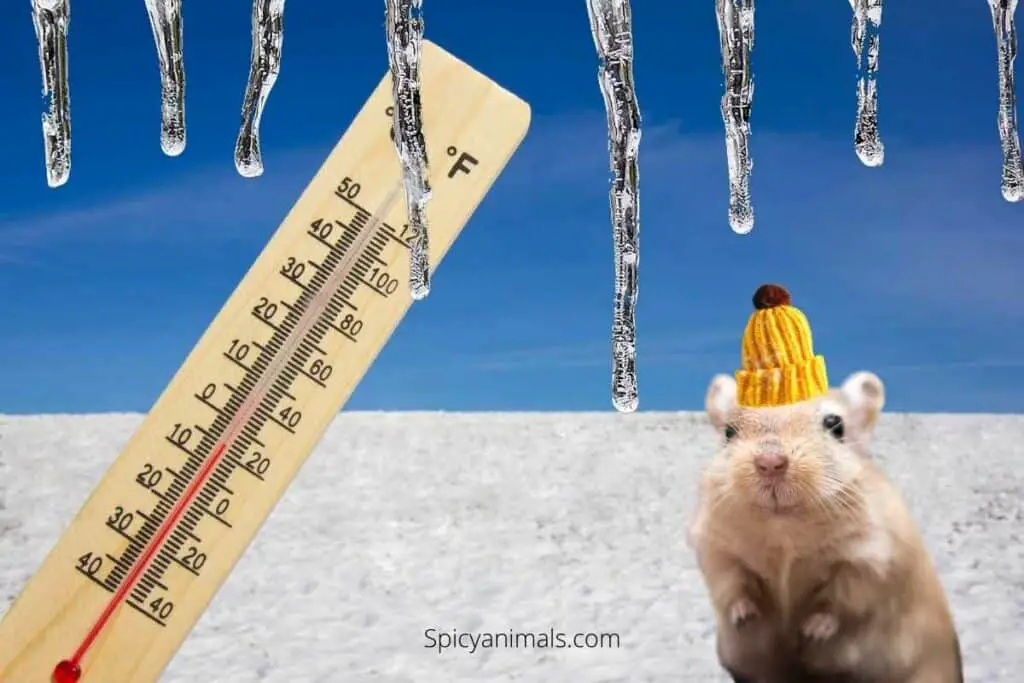Yes, gerbils can experience a serious condition known as tail slip. This injury occurs due to improper handling, especially when lifting the gerbil by its tail. Unlike lizards, gerbils do not fully shed their tails.
In the case of tail slip, the skin and fur on the gerbil’s tail will slough off, which can lead to dangerous tissue necrosis. Immediate medical intervention is crucial; otherwise, the tail will dry up and eventually fall off. To safeguard your gerbil’s well-being, it’s imperative to never pick up your gerbil by its tail.
Why Do Gerbils’ Tails Fall Off?
Gerbils are small, furry rodents that are popular as pets. Unfortunately, gerbils can suffer from a condition called tail slip, which causes their tails to fall off.
Tail slip occurs when the skin is ripped off as a result of lifting a gerbil by its tail. This can result in permanent damage, causing the tail to dry out and ultimately fall off.
In some cases, genetics or environmental factors can contribute to tail loss in gerbils.
For example, if a gerbil has a genetic predisposition for weak skin or fur, it may be more prone to losing its tail due to injury or infection.
If a gerbil lives in an environment with poor hygiene or inadequate nutrition, it may be more likely to experience health issues that could lead to tail loss.
Infections and injuries are two of the most common causes of tail loss in gerbils.
If a gerbil has an infection such as mites or lice, it can cause inflammation and irritation that can lead to the skin coming off the tail.
Injuries such as degloving (where the skin is ripped off) or broken bones can also cause the tail to fall off due to lack of blood supply.
It’s important for pet owners to take steps to prevent their gerbils from experiencing tail slip or other health issues that could lead to tail loss.
Providing your gerbil with a clean and safe environment with adequate nutrition is essential for keeping them healthy and happy.
It’s important not to pick up your gerbil by its tail as this can cause serious injury and even death in some cases.

Types of Gerbil Tail Loss
The most common type of tail loss in gerbils is called “tail slip.” This occurs when a gerbil is picked up by its tail, which can cause permanent damage to the skin and underlying tissue.
If the tail is not treated immediately, it will eventually dry up and fall off. It’s important to be careful when handling your gerbil so that this doesn’t happen.
Another possible cause of tail loss in gerbils is tail biting. This occurs when one gerbil bites another’s tail, causing the skin to break and the underlying tissue to die. In some cases, the entire tail may be bitten off.
If you notice any signs of aggression between your gerbils, it’s important to separate them as soon as possible to prevent further injury.
Finally, some gerbils may suffer from an injury or wound that leads to tail loss.
If your gerbil has been injured and the wound is not healing properly, the tail may fall off as a result.
It’s important to keep an eye on any wounds your gerbil has and seek veterinary care if necessary.
Tail loss in gerbils can be distressing for both pet owners and their pets alike. However, with early detection and treatment, many cases of tail loss can be prevented or reversed.
If you think your gerbil may be suffering from any type of tail loss, it’s important to seek veterinary care right away so that proper treatment can be provided.
What Is Tail Slip in Gerbils?
Tail slip is a condition that occurs when the tail of a gerbil slips out of its socket. This can happen if the gerbil is handled improperly or if it experiences trauma to its tail.
It’s a serious injury and can lead to rotting of the tail, or even complete loss of the tail.
Gerbils have an interesting anatomy when it comes to their tails. They have a long, thin bone at the base of their tails called the caudal vertebrae.
This bone is surrounded by muscles and ligaments that help keep it in place within its socket.
When these muscles and ligaments are damaged, they can no longer hold the caudal vertebrae in place and it can slip out of its socket.
When this happens, it causes severe pain for the gerbil and can lead to infection or even death if left untreated.
If treated quickly, however, the gerbil may be able to recover from the injury with proper care and attention.
In some cases, the tail may dry up and fall off on its own without any intervention from a veterinarian.
Overall, tail slip in gerbils is a serious condition that should not be taken lightly.
If you suspect your gerbil has experienced this injury, seek veterinary help immediately for proper diagnosis and treatment.
What Does Tail Slip Look Like?
Tail slip is a condition commonly seen in gerbils, marked by a loss of fur and skin in the area of the tail.
This can range from mild to severe, with some cases resulting in complete degloving of the tail.
In mild cases, there may be a small patch of missing fur or skin on the tail. In more severe cases, the entire tail may be bald and scaly, and there may even be exposed bone or cartilage at the tip.
It is important to observe and monitor your gerbil for signs of tail slip. If you notice any changes in your gerbil’s fur or skin around its tail, it is best to take it to a veterinarian as soon as possible for an examination and diagnosis.
It is also important to note that tail slip can sometimes be mistaken for other health issues such as mites or ringworm.
Why Does Tail Slip Occur in Gerbils?
Tail slip is a severe injury that can occur in gerbils, causing their tails to rot or dry and fall off.
It’s important to understand why tail slip occurs so that you can create an environment that is suitable for your gerbil and prevent this from happening.
Tail slip usually occurs when a gerbil is picked up by its tail, leading to permanent damage.
The skin comes away from the underlying tissue, leaving the tail vulnerable to infection and decay. In some cases, the tail may even fall off completely.
This type of injury can be extremely painful for the gerbil and should be avoided at all costs.
Another common cause of tail slip in gerbils is improper handling. If a gerbil is handled too roughly or grabbed by its tail, it can cause serious damage to the delicate skin on its back and lead to tail slip.
If a gerbil’s cage isn’t kept clean or doesn’t provide enough space for them to move around freely, they may become stressed and attempt to escape by running quickly through tight spaces which can also result in tail slip.
Finally, environmental factors such as temperature fluctuations or humidity levels that are too high or low can also contribute to tail slip in gerbils.
When temperatures are too extreme, it causes the skin on their tails to become dry and brittle which makes them more prone to injury.
It’s important to keep these factors in mind when caring for your pet gerbil so you can create an environment where they feel safe and secure and reduce their risk of experiencing tail slip.
Provide plenty of space for them to explore, handle them gently with two hands instead of one, keep their cage clean and make sure their habitat has stable temperatures and humidity levels so they don’t experience any unnecessary stress or discomfort.
How To Treat Tail Slip in Gerbils
surgery.
One option is surgery. This involves removing any damaged tissue and then stitching the remaining skin back together.
Surgery can be a successful way to treat tail slip, but it should only be performed by an experienced veterinarian as it carries certain risks.
medication
Another option is medication. This involves using antibiotics or other medications to reduce inflammation and help promote healing in the affected area.
Medication may also be used in conjunction with surgery to help speed up recovery time and reduce pain and discomfort for your gerbil.
antibiotic ointment
Finally, if your gerbil has suffered from a less severe injury, you may be able to apply an antibiotic ointment regularly to keep the underlying tissue moist and help promote healing.
However, this should only be done under veterinary supervision as improper use of ointments could make matters worse for your pet gerbil.
No matter which treatment option you choose for your gerbil’s tail slip, it is important that you seek professional veterinary care as soon as possible after noticing any signs of injury or distress in your pet.
Early diagnosis and treatment can help ensure that your gerbil makes a full recovery from its injury and avoids any long-term complications or health issues down the line.
Do Gerbils Bite Their Tails Off?
Gerbils sometimes bite their tails off, either to themselves or other gerbils. This behavior can be caused by a variety of factors, including stress, overcrowding, and boredom.
If your gerbil is chewing its tail, it’s important to take steps to prevent further damage.
Tail biting can lead to serious health issues for gerbils, such as infection and tail loss.
If the tail tip is bleeding, it should be treated immediately by a veterinarian who can cauterize the wound.
In some cases, the tail may even fall off completely due to an injury or infection.
To prevent tail biting in gerbils, it’s important to provide them with enough space and enrichment activities.
Make sure they have plenty of room to move around and explore in their cage, as well as toys and other objects that will keep them entertained.
Avoid overcrowding your gerbil cage with multiple animals – this can cause stress and lead to aggressive behavior between them.
By taking these precautions, you can help ensure that your gerbil stays healthy and happy for years to come!
Do Gerbils’ Tails Grow Back?
The answer is no, unfortunately. Unlike lizards, which can regrow their tails after they have been lost, mammals like gerbils cannot regenerate body parts that have been lost.
This means that once a gerbil’s tail has slipped off, it will not grow back.
However, there are some factors that can affect the regrowth of a gerbil’s tail after it has been lost.
For example, the age of the gerbil may play a role in how quickly its tail grows back. Younger gerbils tend to heal more quickly than older ones, so if your pet is young enough then you may see some regrowth within a few weeks or months.
The extent of the tail loss also affects how quickly the tail will regrow; if only a small portion of the tail was lost then it may take less time for it to grow back than if most of the tail was lost.
It is important to note that proper care and management during this period are essential for the successful regrowth of the gerbil’s tail.
Make sure to provide your pet with plenty of food and water as well as a safe and comfortable environment in order to promote healing and encourage healthy growth.
In conclusion, while gerbils’ tails do not grow back after they have been lost due to physiological reasons unique to mammals, there are certain factors that can affect how quickly their tails regrow such as age and extent of the loss.
Proper care and management during this period are also important for the successful regrowth of the gerbil’s tail.
FAQ
Is It Normal for A Gerbils Tail to Come Off?
It is not normal for a gerbil’s tail to come off. Gerbils have a defense mechanism called “tail slip” where they can shed their tails if they feel threatened, but this is not a normal occurrence and can be a sign of stress or injury. If a gerbil’s tail does come off, it is important to seek veterinary care as soon as possible to prevent infection and ensure proper healing.
Can Gerbils Break Their Tails?
Yes, gerbils can break their tails. Gerbils have long, thin tails that are susceptible to injury if they are mishandled or caught in something. If a gerbil’s tail is broken, it can cause pain and discomfort, and may even lead to infection if not treated promptly. Signs of a broken tail include swelling, bruising, and a kink or bend in the tail. If you suspect that your gerbil has a broken tail, it is important to seek veterinary care as soon as possible. Treatment may include pain medication, antibiotics to prevent infection, and possibly amputation of the tail if the injury is severe.
Can You Touch a Gerbils Tail?
It is not recommended to touch a gerbil’s tail unless it is necessary, such as when providing medical care or handling the gerbil for transportation. Gerbils have long, thin tails that are sensitive and can easily be injured if handled improperly. If a gerbil is picked up by its tail, it can cause pain and discomfort, and may even lead to a broken tail. It is important to handle gerbils gently and with care, supporting their bodies and avoiding pulling or twisting their tails. If you need to touch a gerbil’s tail, it is recommended to do so with a soft touch and to avoid applying pressure or pulling on the tail.
What Is a Gerbils Tail Made Of?
A gerbil’s tail is made of skin, fur, muscle, and bone. The tail is long and thin, covered in fur, and has a small tuft of hair at the end.
Sources
- American Veterinary Medical Association (AVMA)
- Official website of the American Veterinary Medical Association, offering resources and information related to animal health and care.
- PetMD – Gerbil Care
- A comprehensive guide on how to care for gerbils, including their dietary needs, habitat, and health concerns.
- National Gerbil Society
- The official website of the National Gerbil Society, providing information on gerbil care, breeding, and shows.
- RSPCA – Gerbil Care
- The Royal Society for the Prevention of Cruelty to Animals’ guide on gerbil care, including their needs and potential health issues.
- Petco – Gerbil Care Sheet
- A care sheet from Petco detailing the essentials of gerbil care, from diet to habitat.
- Gerbil Information from Merck Veterinary Manual
- Detailed information on gerbil health and care from the reputable Merck Veterinary Manual.
- Cornell University – Small Mammal Health Series
- A series of articles from Cornell University’s College of Veterinary Medicine on the health and care of small mammals, including gerbils.
- Wikipedia – Mongolian Gerbil
- Comprehensive information about the Mongolian gerbil, its habitat, behavior, and history.
- French National Museum of Natural History
- The official page of the French National Museum of Natural History, where the first known mention of gerbils was reported.
- Brant Lake, New York
- Information about Brant Lake, New York, where the Tumblebrook Farm strain of gerbils originated.




